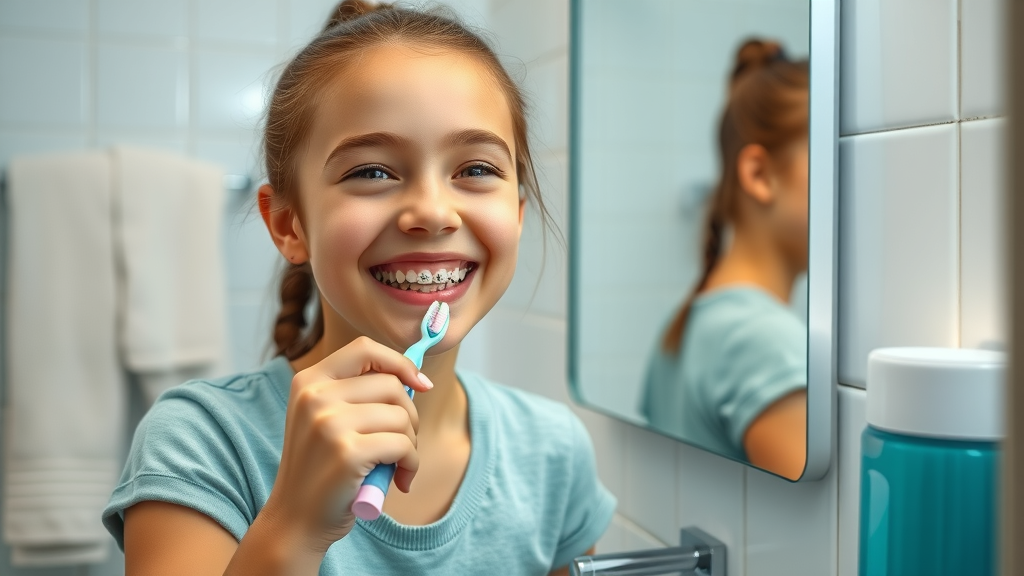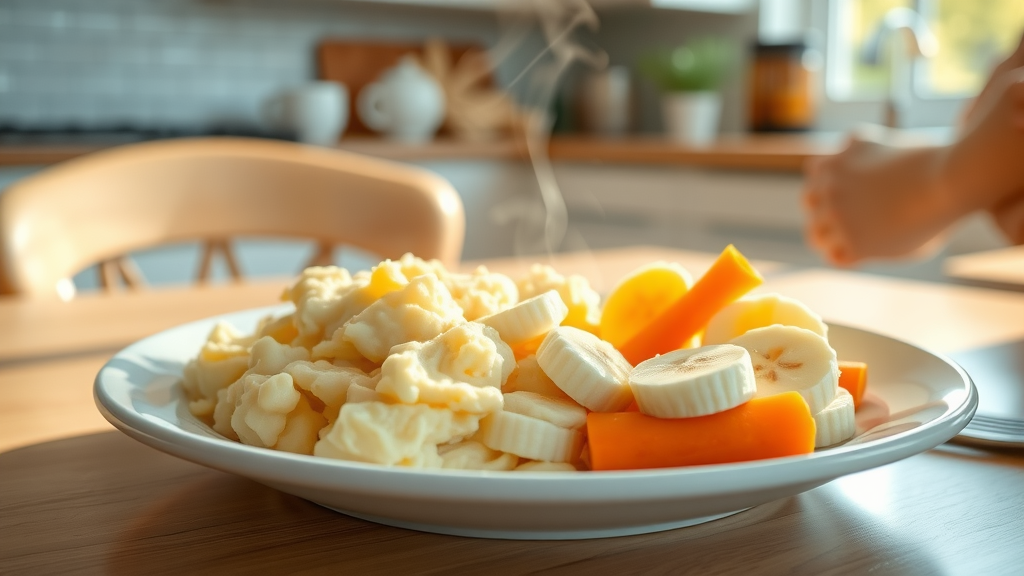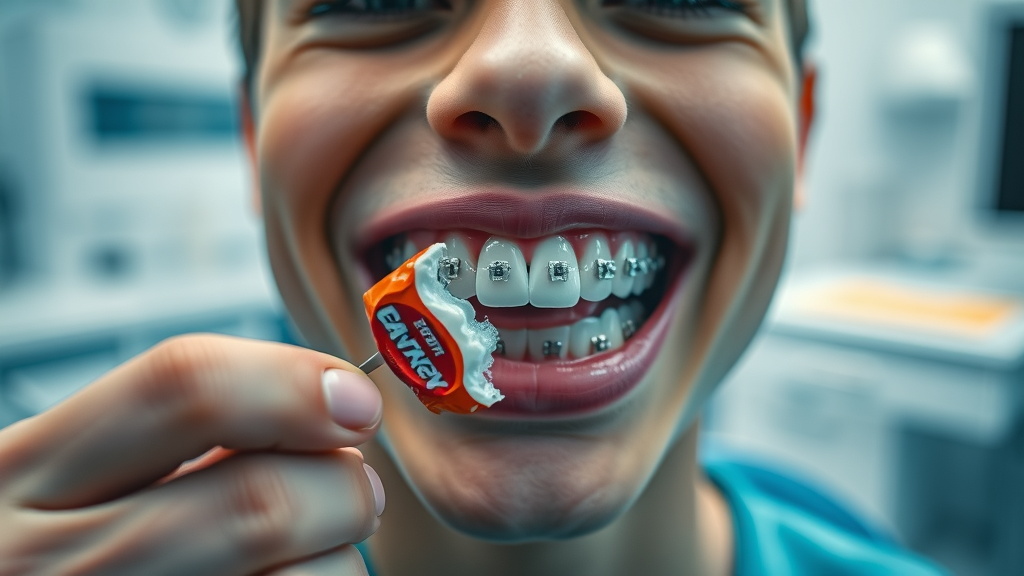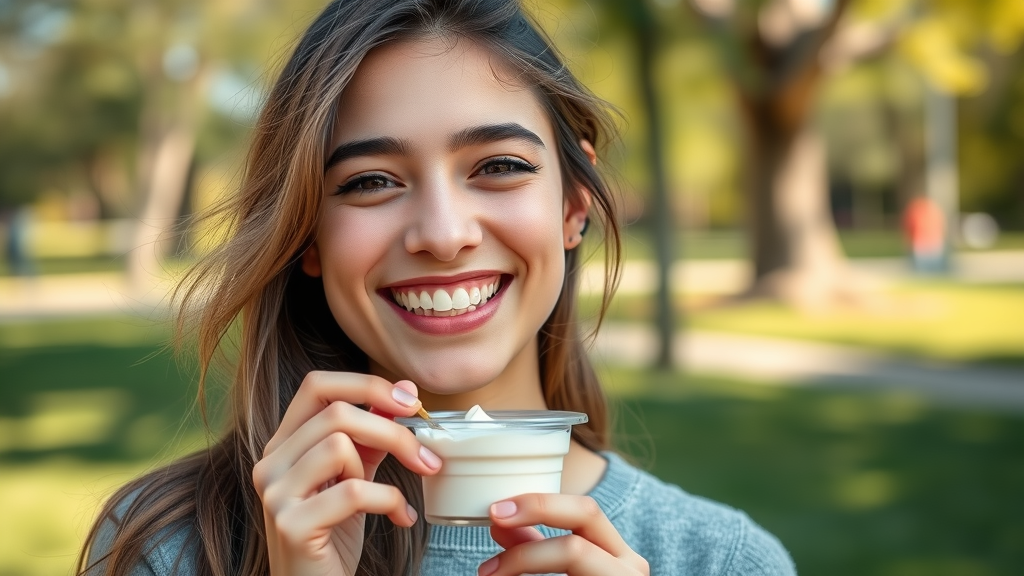Ever wondered why some snacks are suddenly off-limits when you get braces? What if one innocent “treat” set your orthodontic journey back by months? Our guide to the complete list of foods you can't eat with braces will help you steer clear of dental dilemmas and keep your smile on track. If you’re ready to protect your new brackets and wires, read on for honest answers, expert advice, and practical food hacks!
Curious About the List of Foods You Can't Eat with Braces? Here’s What Every Patient Should Know
Getting braces means more than just looking forward to a beautiful smile—it also means learning how to care for them daily. Knowing the foods to avoid with braces could save you from frustrating delays and extra orthodontic visits. Hard, sticky, and chewy foods can damage your brackets and wires, while certain crunchy foods can become stuck and invite plaque buildup, potentially leading to gum disease. Beyond that, understanding the list of foods you can't eat with braces prepares you for healthier choices, ensuring you reach the finish line faster with a confident, healthier smile.
"A single wrong bite can extend your treatment by months—education is just as important as adjustment appointments." – Orthodontic Expert

What You'll Learn: Navigating the Foods to Avoid with Braces
The complete list of foods you can't eat with braces
Why certain foods are on the 'avoid with braces' list
Tips for smart eating habits while wearing braces
Nutritious alternatives for maintaining oral health
Understanding Dietary Restrictions When Wearing Braces
When you wear braces, your diet is more important than ever. The brackets and wires that help straighten your teeth are delicate, and eating the wrong foods can cause them to bend, break, or loosen. This can set your treatment time back, causing extra visits and more discomfort. Food debris can also get stuck in your braces, increasing the risk of plaque buildup and gum disease. By understanding these dietary restrictions, you’re making a smart choice for your oral health and ensuring your orthodontic treatment stays on schedule.
The list of foods you can't eat with braces isn’t just a set of rules—it’s guidance for maintaining good oral hygiene, preventing painful emergencies, and achieving that beautiful smile you’ve always wanted. In the next section, you’ll see exactly which foods top the “do not eat” list, and why the risks go beyond simple inconvenience—they may impact your overall oral health and even your confidence.
The Impact of Your Diet on Oral Hygiene with Braces
Braces create new nooks and crannies where food debris and plaque can easily accumulate. If you eat foods that are too sticky, chewy, or sugary while wearing braces, you risk more than just damaged hardware—you could develop cavities, gum disease, and even staining. Poor food choices make cleaning your teeth much harder, leading to persistent plaque buildup and long-term oral health issues. Developing smart eating habits from day one not only safeguards your braces but also ensures your gums and teeth remain healthy throughout your orthodontic journey.
Better food decisions make brushing and flossing easier, keeping your smile healthy and reducing the risk of cross-contamination from stuck food. A proactive approach can significantly minimize emergencies and maximize your treatment results. By combining the right foods with good oral hygiene, you pave the way for a smooth process and a radiant, healthier smile when your braces finally come off.

The Ultimate List of Foods You Can't Eat with Braces
Category |
Examples |
Associated Risks to Braces |
|---|---|---|
Hard Foods |
Nuts, popcorn, ice, hard candies, crusty bread |
Break brackets and wires, cause sore teeth, stuck in your braces |
Chewy Foods |
Bagels, licorice, caramels, chewy candies |
Pulls on brackets and wires, increases risk of breakage |
Sticky Foods |
Gum, taffy, gummy bears, toffee |
Sticks under wires, hard to clean, increases plaque and decay risk |
Crunchy Foods |
Chips, hard taco shells, raw carrots, pretzels, apples (whole) |
Cracks brackets, bends wires, gets stuck between teeth and braces |
Foods Needing Small Pieces |
Apples, pears, tough meats, bread crusts |
Whole bites can damage hardware; cut into smaller pieces to reduce risk |
Foods to Avoid with Braces: Hard Foods, Chewy Foods, and More
Hard Foods to Avoid with Braces: Nuts, popcorn, ice, hard candies—these can snap brackets and wires instantly. Even a single bite of something too hard may send you running to the orthodontist for a repair. Always use caution and check snacks for hidden hard bits.
Chewy Foods You Shouldn’t Eat with Braces: Caramels, licorice, tough bagels, and sticky rolls can tug on your brackets and wires. Over time, the constant pulling strains your orthodontic appliances, risking long-term damage or detachment.
Sticky Foods on the No-Go List: Gum, taffy, gummy bears, and chewy candy are notorious for getting stuck in your braces. Besides being tough to clean, these foods can introduce sugars that feed plaque buildup and cause oral hygiene problems.
Crunchy Foods That Can Damage Braces: Chips, hard taco shells, and raw carrots can snap wires and dislodge brackets. Instead, opt for softer vegetables or cut them into smaller pieces to minimize danger.
Foods You Must Cut into Smaller Pieces: Whole apples, pears, tough bread crusts, and some tough meats are fine when sliced into bite-sized pieces. This reduces pressure on your orthodontic hardware while allowing you to enjoy nutritious options safely.
Why Soft Foods Are the Safest Choices When Wearing Braces
Soft foods are strongly recommended during orthodontic treatment because they significantly lower the risk of damaging brackets and wires. Opting for soft, easy-to-chew foods like yogurt, mashed potatoes, and scrambled eggs helps protect your hardware, making it less likely that bits will get stuck or break your braces. Soft foods are also easier to clean from your teeth, contributing to better oral hygiene and ensuring the progress of your orthodontic treatment is smooth and on schedule.
When you focus on soft foods, eating becomes more comfortable, especially after adjustment appointments. Steamed veggies, ripe bananas, and cottage cheese are gentle on sore teeth and don’t pose the same risks as hard or sticky foods. If you miss crunch, try steaming your favorite fruits and vegetables to a tender texture, so you can enjoy variety without the worry. Making these smart choices now ensures you won’t have to face preventable emergencies or treatment delays, keeping that dream of a healthier smile in clear view.
Yogurt
Mashed potatoes
Scrambled eggs
Banana
Steamed vegetables

Elevating Oral Hygiene: How Your Diet Affects Braces Maintenance
Your diet is closely tied to how easy it will be to maintain clean braces and healthy gums. Foods that are hard, crunchy, or sticky increase the amount of food debris and plaque buildup around your brackets and wires. This can not only cause bad breath but also raise the risk of gum disease, cavities, and white spots on your teeth. By choosing to avoid the foods on the do-not-eat list, you’re also making brushing and flossing more effective, giving yourself the best chance for a beautiful, healthy smile when treatment ends.
When you eat wisely while wearing braces, you reduce the amount of time and effort required to keep your mouth clean. Eating soft foods and careful preparation of fruits and vegetables supports both oral hygiene and the long-term success of your orthodontic treatment. Good nutrition, coupled with practiced care, keeps your teeth strong and your brackets and wires intact.
Brushing and Flossing Tips for Braces Wearers
Brushing and flossing are more important than ever while you wear braces. Use a soft-bristled toothbrush and brush after every meal to prevent food debris from getting trapped in your hardware. Be sure to angle the brush along the gumline and spend plenty of time cleaning around each bracket and wire. Special orthodontic flossers and threaders make it easier to clean between teeth, while water flossers help remove stubborn particles and plaque that regular floss might miss.
Consistent oral hygiene routines aren’t optional when you wear braces—they're essential to prevent plaque buildup and gum disease. Rinse with water after meals whenever brushing isn’t possible, and avoid eating sticky or sugary snacks that could linger in your braces. With commitment and the right techniques, you’ll keep your mouth fresh and your brackets and wires safe, setting the stage for lasting oral health and a stunning smile.
Smarter Snacking: How to Cut Foods into Smaller Pieces with Braces
Enjoying your favorite foods is still possible when you wear braces—it just takes a little extra preparation. By cutting crunchy fruits, tough meats, and chewy bread into small, manageable pieces, you can greatly reduce the risk of putting too much pressure on your orthodontic appliances. Slicing apples and pears before eating, or tearing crusty bread into bite-sized portions, allows you to enjoy a variety of healthy choices without risking damage.

Cutting Techniques and Portion Control for Dietary Restrictions
Proper cutting techniques make it easier to stick to dietary restrictions without sacrificing flavor. Use a sharp knife and a sturdy cutting board to prepare all hard or crunchy foods. Cut items like apples and pears into thin slices, and portion out tougher bread into small pieces. If you love raw veggies, try steaming them first or chopping them into strips that are easy to chew without putting strain on your brackets.
Portion control is key—take small bites and chew slowly to keep pressure even across your teeth. Always test new foods for texture before taking a full bite, and avoid foods that resist cutting into smaller pieces. By building these habits, you’ll get to enjoy more variety and nutrition, while minimizing the risks that could send you back to the orthodontist for repairs.
People Also Ask: What food can't you eat while having braces?
Direct Answer Including a Comprehensive List of Foods You Can't Eat with Braces
If you’re wondering, “What food can’t you eat while having braces?” here’s a quick, comprehensive list: popcorn, nuts, hard candies, crunchy chips, ice, caramels, taffy, gum, bagels, licorice, pretzels, raw carrots, hard taco shells, and whole apples. These foods can damage your braces, get stuck in your devices, or make it difficult to maintain good oral hygiene. Always look for softer, brace-friendly alternatives and cut hard foods into smaller pieces whenever possible for safe eating and proper orthodontic care.
People Also Ask: What's the hardest thing you can eat with braces?
Answer: Identifying the Most Challenging Foods to Avoid with Braces
The most challenging foods to eat with braces are those that are extremely hard or sticky. Hard foods like nuts, popcorn kernels, and ice pose the greatest risk for breaking brackets and wires. Sticky foods such as caramel, chewing gum, and taffy can pull your hardware loose or get embedded around your brackets, increasing the risk for plaque buildup and gum disease. To prevent these complications and keep your treatment on track, always avoid such items and choose safer, softer options instead.

People Also Ask: What food breaks a braces bracket?
Answer: Recognizing Top Offenders in the List of Foods You Can't Eat with Braces
Foods most commonly responsible for broken braces brackets are hard candies, ice, nuts, popcorn, and tough bread crusts. These are risky because they can put excessive pressure on your brackets and wires, leading to immediate damage or loosening of your appliances. Avoiding these texturally challenging foods, following the recommended list of foods you can’t eat with braces, and prepping snacks into bite-sized pieces are crucial for keeping your orthodontic treatment smooth and trouble-free.
FAQs: Common Questions About the List of Foods You Can't Eat with Braces
Can I occasionally eat restricted foods with braces?
It’s highly recommended to avoid all forbidden foods, even on special occasions. One wrong bite can undo weeks of progress, so it’s safest to stick to the list throughout your orthodontic treatment.What should I do if I eat something forbidden?
If you’ve eaten something from the do-not-eat list and feel discomfort or notice a broken bracket, contact your orthodontist as soon as possible. Always rinse and brush your teeth carefully to remove any food debris.How can I satisfy cravings while following braces dietary restrictions?
Try soft, healthy swaps like yogurt, mashed fruits, or blended smoothies. These satisfy your sweet tooth and provide comfort without risking damage to your braces.
Key Takeaways on the List of Foods You Can't Eat with Braces
Always follow your orthodontist’s advice on foods to avoid with braces
Choose soft foods to protect brackets and wires
Good oral hygiene and proper dietary restrictions ensure smooth treatment
Conclusion: Choose Wisely from the List of Foods You Can't Eat with Braces
"Your smile is worth every choice you make today—paying attention to what you eat will pay off with every perfect, healthy smile tomorrow."

Stay Informed, Protect Your Smile—Join the Grand Strand Smile Spotlight
Your smile is worth it — and staying informed is the first step. Join hundreds of locals already following Grand Strand Smile Spotlight for updates, advice, and trusted care insights.
When undergoing orthodontic treatment, it’s crucial to be mindful of your diet to protect your braces and ensure effective results. Hard, sticky, and chewy foods can damage brackets and wires, potentially prolonging treatment time. For a comprehensive understanding of which foods to avoid, the article “Foods to Eat and Avoid with Braces - Hard, Sticky, Chewy, Ice & More…” provides detailed insights into specific food categories and their associated risks. (burkeredfordorthodontists.com) Additionally, “Foods to Avoid with Braces | Eat Smart for a Healthy Smile” offers practical advice on maintaining a braces-friendly diet, emphasizing the importance of avoiding certain foods to prevent damage and maintain oral health. (hinghamorthodontics.com) By adhering to these guidelines, you can safeguard your orthodontic appliances and stay on track toward achieving a healthy, beautiful smile.
 Add Row
Add Row  Add
Add 




Write A Comment